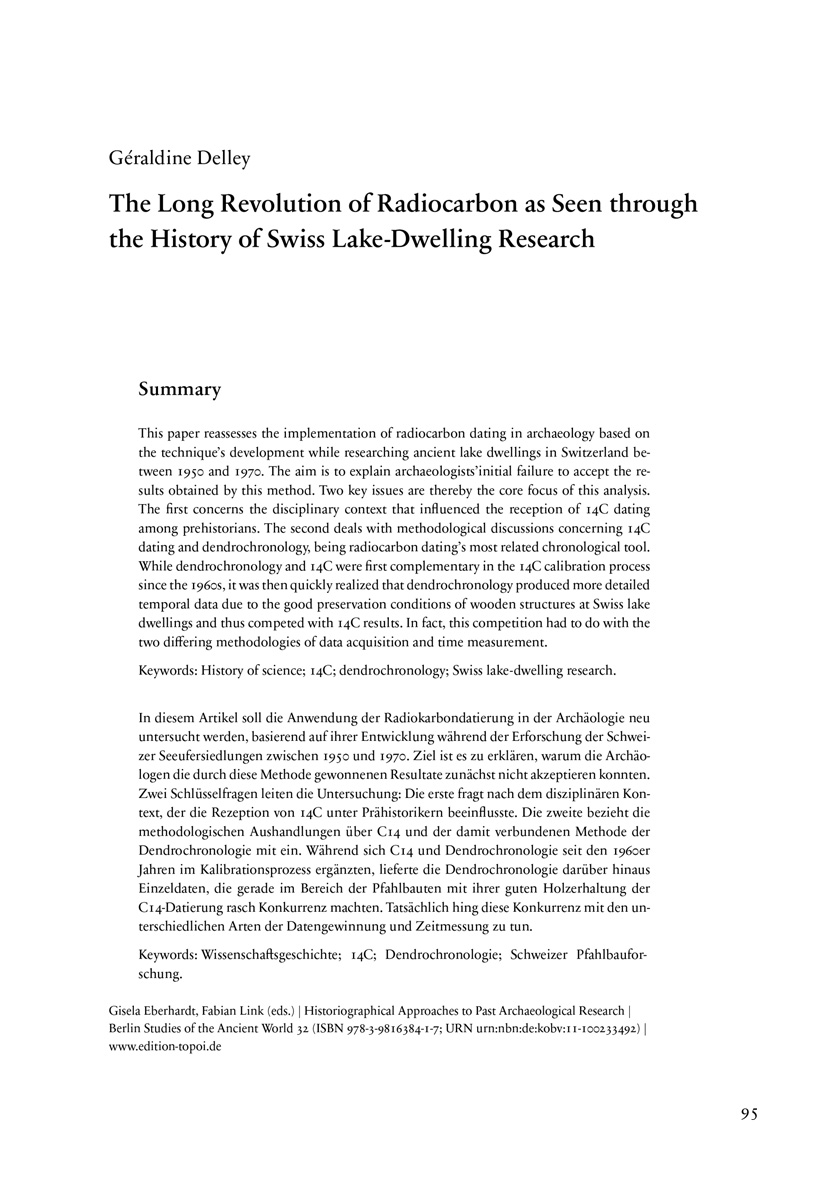The Long Revolution of Radiocarbon as Seen through the History of Swiss Lake-Dwelling Research
This paper reassesses the implementation of radiocarbon dating in archaeology based on the technique’s development while researching ancient lake dwellings in Switzerland between 1950 and 1970. The aim is to explain archaeologists’initial failure to accept the results obtained by this method. Two key issues are thereby the core focus of this analysis. The first concerns the disciplinary context that influenced the reception of 14C dating among prehistorians. The second deals with methodological discussions concerning 14C dating and dendrochronology, being radiocarbon dating’s most related chronological tool. While dendrochronology and 14C were first complementary in the 14C calibration process since the 1960s, it was then quickly realized that dendrochronology produced more detailed temporal data due to the good preservation conditions of wooden structures at Swiss lake dwellings and thus competed with 14C results. In fact, this competition had to do with the two differing methodologies of data acquisition and time measurement.
In diesem Artikel soll die Anwendung der Radiokarbondatierung in der Archäologie neu untersucht werden, basierend auf ihrer Entwicklung während der Erforschung der Schweizer Seeufersiedlungen zwischen 1950 und 1970. Ziel ist es zu erklären, warum die Archäologen die durch diese Methode gewonnenen Resultate zunächst nicht akzeptieren konnten. Zwei Schlüsselfragen leiten die Untersuchung: Die erste fragt nach dem disziplinären Kontext, der die Rezeption von 14C unter Prähistorikern beeinflusste. Die zweite bezieht die methodologischen Aushandlungen über C14 und der damit verbundenen Methode der Dendrochronologie mit ein. Während sich C14 und Dendrochronologie seit den 1960er Jahren im Kalibrationsprozess ergänzten, lieferte die Dendrochronologie darüber hinaus Einzeldaten, die gerade im Bereich der Pfahlbauten mit ihrer guten Holzerhaltung der C14-Datierung rasch Konkurrenz machten. Tatsächlich hing diese Konkurrenz mit den unterschiedlichen Arten der Datengewinnung und Zeitmessung zu tun.

